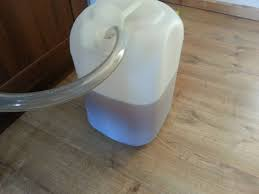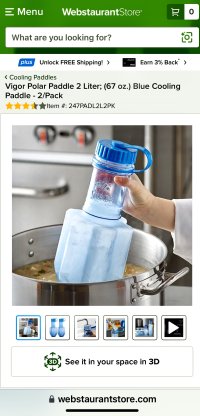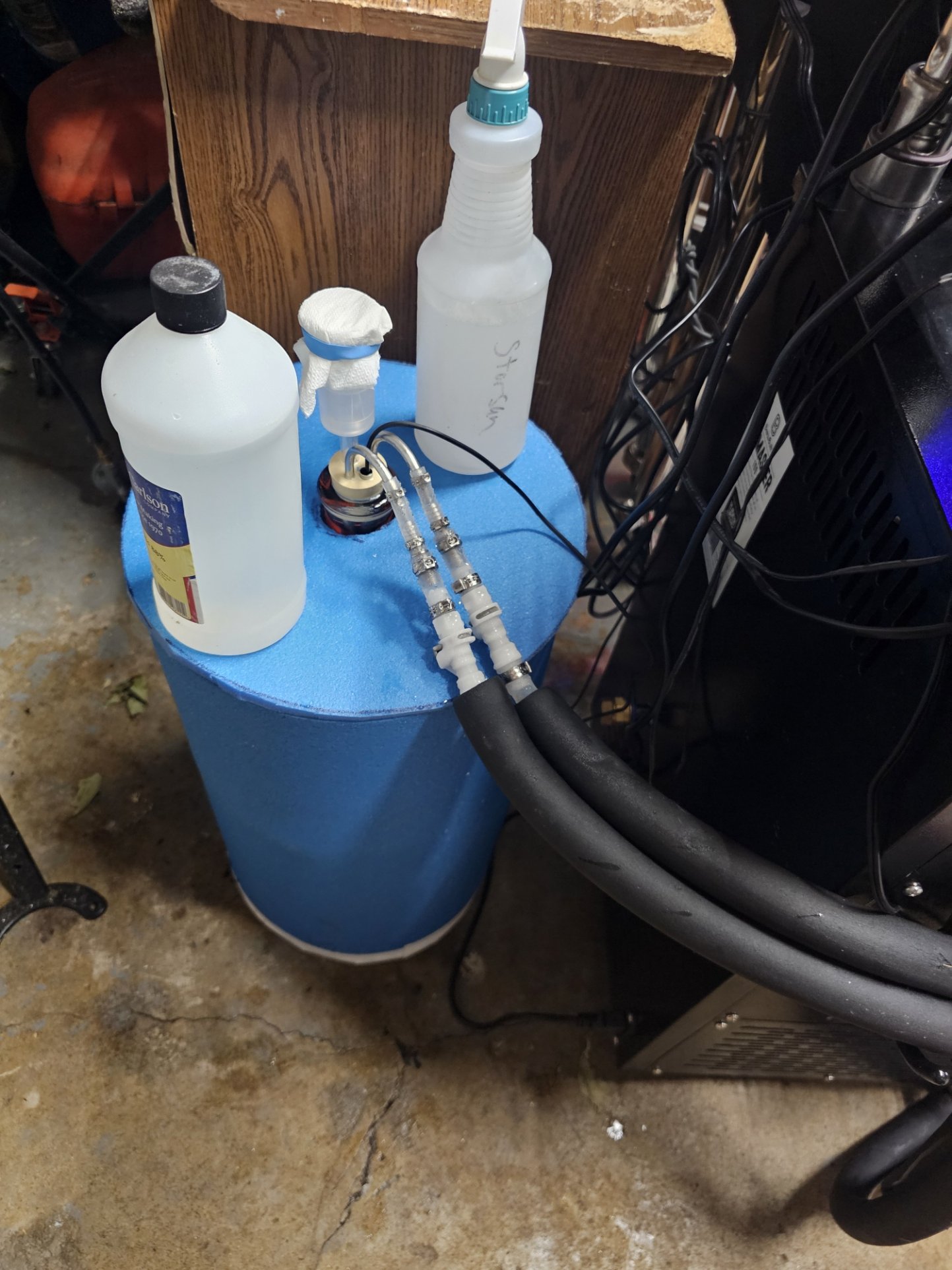worlddivides
Well-Known Member
So, the last time I used an ice bath was probably back in 2014. I think I only used an ice bath once, but it took so long to cool the wort that I switched to an immersion chiller for my second brew. It's been over 10 years since then and I've been planning on trying to cool wort after the boil using an ice bath, but this time it would be 3-5 times more ice than I used back then.
But if you've looked at my thread in the kegging forum, I've decided to start kegging for the first time, but the fridge that I have can only really fit one keg. One thing I DID notice, however, is that my smallest fermenter and my boil kettle can fit in the fridge (and the keg does not currently contain beer, so I'm free to use the fridge for whatever in the mean time). So I thought that I after I cooled the wort from boiling temps down to, say, 80F/27C or so, I could just put it in the fermenter and put the fermenter in the fridge (which is around 40F/4C) and cool it from there.
But that got me to wondering. If I set the fridge temp as low as it can go, could I also just put the kettle in there? Not when the wort is at boiling temperatures or so, of course, but after it's cooled down a bit? I would still imagine an immersion chiller or an ice bath would cool the wort faster, but I also often hear about how homebrewers reach a limit of say 85 or 80 in the summer and can't get the wort cooler than that, but that shouldn't be a problem in a fridge, right?
Just a thought I had, and I have to imagine that people who regularly cold crash or lager have tried it before.
But if you've looked at my thread in the kegging forum, I've decided to start kegging for the first time, but the fridge that I have can only really fit one keg. One thing I DID notice, however, is that my smallest fermenter and my boil kettle can fit in the fridge (and the keg does not currently contain beer, so I'm free to use the fridge for whatever in the mean time). So I thought that I after I cooled the wort from boiling temps down to, say, 80F/27C or so, I could just put it in the fermenter and put the fermenter in the fridge (which is around 40F/4C) and cool it from there.
But that got me to wondering. If I set the fridge temp as low as it can go, could I also just put the kettle in there? Not when the wort is at boiling temperatures or so, of course, but after it's cooled down a bit? I would still imagine an immersion chiller or an ice bath would cool the wort faster, but I also often hear about how homebrewers reach a limit of say 85 or 80 in the summer and can't get the wort cooler than that, but that shouldn't be a problem in a fridge, right?
Just a thought I had, and I have to imagine that people who regularly cold crash or lager have tried it before.








![Craft A Brew - Safale S-04 Dry Yeast - Fermentis - English Ale Dry Yeast - For English and American Ales and Hard Apple Ciders - Ingredients for Home Brewing - Beer Making Supplies - [1 Pack]](https://m.media-amazon.com/images/I/41fVGNh6JfL._SL500_.jpg)



















































